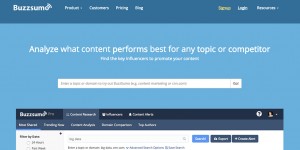
Growth is good. But contrary to what they say, you can have too much of a good thing. A growing creative agency does bring in more money. But it also spends more money. If you don’t manage your money well and you spend more than you make, then you could be forced to fire employees, reject work, or even close up shop.
The faster you grow your creative agency, the more quickly you’ll need to add employees. You’ll need to keep them busy without burning anyone out, but balancing between enough work and too much work is an ongoing struggle. The goal is keeping your employees engaged, your projects on time, and your agency operations within budget.
If you do properly manage your people, projects, and resources, you can increase your profitability along with your sales. Try using this growth guide to ensure your creative agency’s success.
Operating efficiently
Doing more with less ensures your creative agency’s success because efficient project management optimizes productivity and profitability. The more work that you bill, and the less it costs you to produce, the more profit you will make. The key is to know how the work is being done.
You may keep asking your creatives how they are doing, and they may keep replying that they are really busy. But that isn’t enough, because “busy” doesn’t mean “productive,” and “productive” doesn’t mean “profitable.” Your team must do the right work, and it must do it well.
Replicate the success of a project that met your profitability goals while pleasing your client by using it as the basis for similar work. Create templates for budgets and creative briefs so that you can develop accurate project estimates and schedules with multiple target dates. With the right creative project management software, you could then route your plans to clients for their approval. This would save you time, which you could use to complete more work, thereby generating more revenue.
You can also accomplish more by streamlining communication. Facilitate collaboration with clients through digital proofing, which allows them to directly comment on shared copies of creative deliverables. Your team could then revise the work based on the client’s feedback and reroute it to the client for approval, which is more likely to come easily, given the direct communication.
You can also minimize confusion by storing communication in a mutually accessible location online. You and your fellow executives or owners could then see who told whom what, respond to clients with accurate information, and offer the option for them to log in and track communications themselves. Perhaps most importantly, you should use creative management software to track the progress of projects. When you know who needs what and by when, you can hold your team accountable. You can also use integrated time tracking software to spot and resolve bottlenecks.
Managing workloads
Having enough people—and the right people—also helps you grow and succeed. Maintaining that proper mix requires you to always know which resource is being used and how. You must avoid employee burnout by bringing in new people when the workload warrants it, but you will compromise profitability if you add resources too soon.
More than one-third of working adults surveyed in North America in 2014 reported losing one hour or more per day in productivity due to stress, according to Statista. Apply those statistics at your agency. Would you want one-third or more of your employees to be so stressed that they burn out? In addition to considering their personal well-being, could your agency afford to pay those employees an extra hour per day knowing that they are not working for that time?
Ideally, an employee should bill seven hours per workday on average, equating to about 85 percent of his or her time. Track productivity for individuals, projects, and your agency in terms such as billable and unbillable time. Forecast demand with resource management software so that you stay ahead of your workload. If you see enough work coming on to profitably add a team member, go ahead and do so in order to prevent burnout. Pair seasoned team members with new additions so that the former can gain some fresh insights while teaching the latter how to succeed at your agency.
Scaling the agency
You obviously can’t grow your agency if you don’t increase your sales. But ways to increase your sales aren’t always obvious.
Tracking every opportunity with sales software helps you close more deals because you can see where in the process each deal is and what must be done to bring it to fruition. You can also customize formats for estimates to suit your client, thereby speeding up approvals. Integrating calendars and sharing contacts, including relevant notes, across your team provide additional efficiency internally.
Forecasting revenue based on upcoming work can help you determine whether or not you can afford the additional help that you may want to hire or the equipment that you want to purchase. Update your forecasts regularly so that you base decisions on timely and accurate data.
Introducing change
The fear of the unknown is often worse than the reality of the known. Your team may anticipate the worst when you first mention that you will be implementing a new process or new software. So, you must assuage your team members’ anxieties by demonstrating how this change will make their specific jobs easier. Motivate your team by explaining the benefit for each department. For example, creatives might want to know that it will streamline and improve project management, while accounting may like to hear that it will automate timekeeping and simplify the preparation of invoices.
Let each employee ease into the transition. Provide training in small groups or to individuals so that each team member can learn at his or her own pace and get the appropriate level of support. If implementing new software, ensure that there is a robust online training portal or an accessible help desk to help employees learn more quickly and alleviate problems as you go live.
Choosing the right clients
Don’t simply equate a large retainer with an excellent client, because the biggest clients aren’t necessarily the best. You can land a seemingly plum account that drives your revenue, but you may be able to service smaller clients more profitably—and perhaps more pleasantly, with fewer headaches. Consider what types of clients would most benefit from your service as well as which you could best serve. If your expertise in a particular industry differentiates you from the competition, then teach marketing and sales to capitalize on that niche. If your agency has especially powerful capabilities, like out-of-this-world graphics design or a mastery of SEO, then play to your team’s strengths.
Ensure that your sales and creative teams communicate so that each knows what the other can do and is doing. It won’t do you much good to have your sales reps pitch healthcare clients if your creative team doesn’t know the difference between an aspirin and a Band-Aid. Nor does it help if you have the world’s best Web designer if you don’t sell Web design.
Review and analyze your profitability by client periodically to see which target area is performing the best. Evaluate clients in metrics such as client income and accounts receivable aging. Are you billing each client as expected? Why or why not? And how can you build your relationship and increase billing?
Do what you can to speed up payments as well. Sending a large invoice doesn’t do much if you have to wait longer than you should to collect. Concentrate on clients that pay promptly in order to keep cash flowing and your agency growing.
Communicating internally
Money talks. Numbers tell the story. Pick whichever cliche you like. The truth is that regularly running, reviewing, and sharing reports with your team helps ensure your agency’s success.
Streamline accruals and work in progress with finance software so that you can see revenues and expenses in real time. With the proper software, you can also speed up the processing of purchase orders, integrate with banking functions, and download corporate credit card transactions so that you don’t have to wait for expense reports to know how charges will affect your agency’s cash flow.
Agency management software can similarly allow you to make decisions based on accurate, up-to-date data. Assess the progress of projects and performance of your team by reviewing them based on your key metrics. Connect your project management and accounting systems so that you can reach true profitability by analyzing projects and clients in terms of revenues generated and resources expended.
Improve performance by managing your agency based on your data and your people. Leverage everyone’s best traits and keep high-performing groups intact whenever possible. When communicating internally, solicit feedback and suggest processes without micromanaging. Engage your team members in pursuing your shared goals and empower them to work on your behalf in doing so.
With sales to make, services to provide, and people to manage, growing a creative agency requires you to move in many directions at once. The faster you grow, the more you are pulled.
Efficiently managing your revenue, resources, and projects can ensure creative agency success. We have included what executives must know in order to do so as part of this growth guide. What would you add to this list?
Business & Finance Articles on Business 2 Community
(70)







